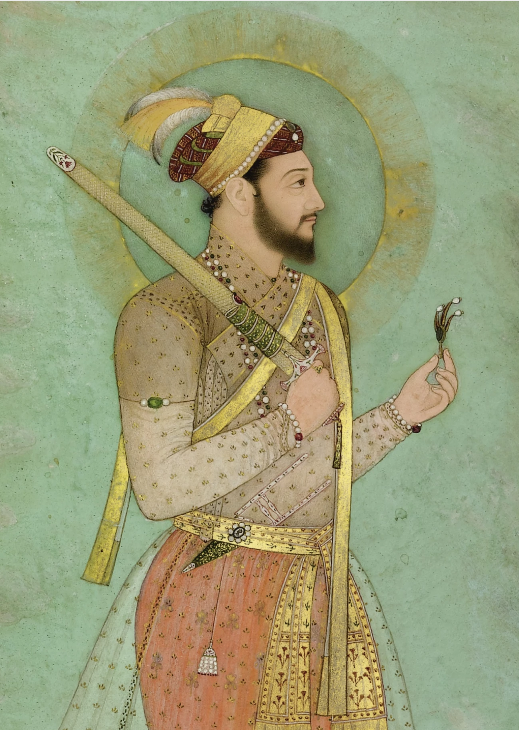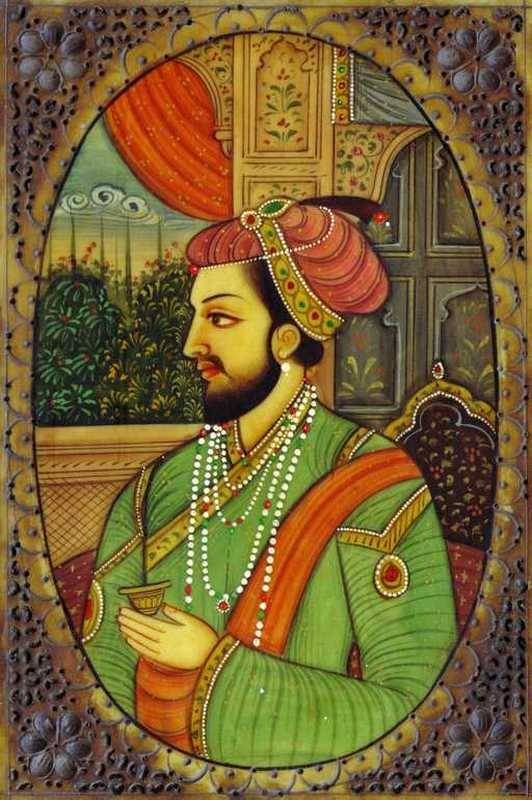Shah Jahan was born in Lahore, Pakistan, to Prince Salim (later Emperor Jahangir) and
his Rajput wife from Marwar, Princess Jagat Gosaini. Bilqis Makani was her Mughal name.
Akbar, the Mughal Emperor, was Shah Jahan’s grandfather. Although he was born Prince
Khurram, he later assumed the regnal name Shah Jahan. He was Jahangir’s third son and
was regarded as the most capable ruler. Following Jahangir’s death, he overthrew his rivals
for the throne and emerged victorious. On February 14, 1628, he was crowned in Agra.
He was trained in martial arts and a variety of fine arts. He was primarily raised by
Akbar’s first wife, the childless Empress Ruqaiya Sultan Begum.
After Jahangir died in 1627, Shah Jahan reached Agra with the support of the nobles
and the army and ascended the throne. Shah Jahan launched a prolonged campaign in
the northwest frontier to recover Kandahar and other ancestral lands. But he was unable
to control Kandahar.
Administration of Shah Jahan
He continued Akbar’s policy. Mansabdari policy was introduced. He introduced a feature called the month scale. This system was introduced to compensate for the gap between the Jama and Hasil. Jama is expected income and Hasil is actual income. He followed the forward policy in Deccan.
In 1633 he success in Ahmednagar. It is possible because of the death of Malik Amber. After the death of Malik ambar Shahjahan was successful in Ahmednagar. He suppresses the revolt of khane jahan Lodhi. He also suppresses the portages hugely. Shah Jahan directed Qasim Khan, the Mughal viceroy of Bengal, to drive the Portuguese out of their trading post at Port Hoogly in 1631. The Portuguese were accused of trafficking by high Mughal officials, and the
Mughal-controlled port of Saptagram began to suffer from commercial competition. The
Jesuits’ activities in that region enraged Shah Jahan, especially when they were accused of
kidnapping peasants. On September 25, 1632, the Mughal Army raised imperial banners
and took control of the Bandel region, and the garrison was punished. Shah Jahan
captured the Daulatabad fortress in Maharashtra in 1632 and imprisoned Husain Shah of
the Nizam Shahi Kingdom of Ahmednagar. Golconda surrendered in 1635, followed by
Bijapur in 1636.
Aurangzeb was appointed Viceroy of the Deccan by Shah Jahan, which included Khandesh,
Berar, Telangana, and Daulatabad. Aurangzeb conquered Baglana, and Golconda in 1656, and Bijapur in 1657 during his viceroyalty.
Treaty with Bijapur and Golconda in 1636. Bijapur and Golconda are tributaries.
Shahjahan also followed aggressive policy northwest. He wanted to recover his ancestral
land. But his expedition failed, sentence three expeditions to the northwest, but they failed.
He lost Kandahar.
According to evidence from Shah Jahan’s reign, the army in 1648 consisted of 911,400
infantry, musketeers, and artillery men, as well as 185,000 Sowars commanded by
princes and nobles.
His cultural and political beginnings have been described as a type of Timurid Renaissance,
in which he forged historical and political ties with his Timurid ancestors primarily through
numerous unsuccessful military campaigns in his ancestral region of Balkh.
Shah Jahan appropriated his Timurid heritage and grafted it onto his imperial legacy in
various forms. During his reign, the Marwari horse, which became Shah Jahan’s favorite,
was introduced, and various Mughal cannons were mass-produced in the Jaigarh Fort.
Under his rule, the empire grew into a massive military machine, and the number of nobles
and their contingents nearly quadrupled, as did citizens’ demands for more revenue.
However, because of his financial and commercial policies, it was a period of general
stability—administration was centralized, and court affairs were systematized. During his
reign, the Mughal Empire expanded moderately as his sons commanded large armies on
various fronts. At the time, India was a rich center of arts, crafts, and architecture, and
some of the world’s best architects, artisans, craftsmen, painters, and writers lived in Shah
Jahan’s empire.
Contribution to the Architecture of Shah Jahan
Shah Jahan left a grand legacy of structures built during his reign. He was a major
supporter of Mughal architecture. His reign heralded the Mughal architectural golden age. His most famous structure was the Taj Mahal, which he constructed out of love for his wife, Empress Mumtaz Mahal. His relationship with Mumtaz Mahal has influenced Indian art, literature, and film. Its structure was meticulously designed, and architects from all over the world were enlisted to help. The building took twenty years to complete and was made of white marble with brick underlayment.
When he died, his son Aurangzeb had him interred in it alongside Mumtaz Mahal.
Shah Jahan was the sole owner of the royal treasury and several precious stones, including
the Kohinoor.
Among his other works are the Red Fort, also known as the Delhi Fort or Lal Qila in Urdu,
large sections of the Agra Fort, the Jama Masjid, the Wazir Khan Mosque, the Moti Masjid,
the Shalimar Gardens, sections of the Lahore Fort, the Mahabat Khan Mosque in Peshawar,
the Mini Qutub Minar in Hastsal, Jahangir mausoleum—his father’s tomb, built under the
supervision of his stepmother Nur Jahan—and the Shahjahan Mosque.
To commemorate his rule, he had the Peacock Throne, Takht-e-Taus, built. Shah Jahan
also inscribed profound Quranic verses on his architectural masterpieces.
The Shah Jahan Mosque was built in 1647 during the reign of Shah Jahan in Thatta,
Sindh province of Pakistan. The mosque is made of red bricks with blue glaze tiles that
were most likely imported from Hala in Sindh.
Revolt during the reign of Shah Jahan
- Due to the disturbances caused by Shah Jahan himself and the declining health of Jahangir, Shah Jahan pursued an assertive policy aimed at expanding and consolidating his empire.
- One of his initial concerns was the Deccan region, where all the gains made under Jahangir until 1621 had been lost.
- By 1633, Shah Jahan successfully annexed Ahmednagar by skillfully employing diplomacy, aligning Bijapur and Golconda with his interests. In this regard, Shah Jahan’s Deccan policy proved to be more successful.
- Jujhar Singh, the son of Vir Singh Bundela, was known for his involvement in the assassination of Abul Fazal, orchestrated by Jahangir. However, during the reign of Shah Jahan, Jujhar Singh found himself aligned with the Nur Jahan Junta, which affected his status and privileges, leading to a loss of respect. Consequently, he resorted to rebellion, but his revolt was eventually quashed.
- Shah Jahan assigned Khan – i – Jahan Lodi with the hope of annexing Deccani states into the Mughal Empire. However, Khan – i – Jahan Lodi conspired against Shah Jahan and formed an alliance with Mutuja Nizam of Ahmad Nagar. This led to the occupation of some Mughal territories in the Deccan, although the revolt was eventually quelled.
- Shah Jahan also took measures to suppress the Portuguese in Hooghly due to their frequent abuse of trade privileges granted to them.
Deccan Famine
❖ During Shah Jahan’s reign, the Deccan famine occurred in 1632, resulting in the loss of millions of lives.
❖ Italian traveler Peter Mundy provided a comprehensive account of this devastating famine. Conversely, Abdul Hamid Lahori, in his “Padshahnama” or ‘Book of Emperors,’ documented the famine relief measures implemented by Shah Jahan.
More About Shah Jahan
- Shah Jahan’s era marks the pinnacle of Mughal architecture. In 1631, Shah Jahan commissioned the construction of the Taj Mahal in memory of his beloved queen, Mumtaz Mahal.
- The period of Shah Jahan also witnessed significant developments in mosque and fort construction.
- The later years of Shah Jahan’s rule were marred by a war of succession among his sons. His eldest son, Dara Shikoh, received support from his sister, Jahanara Begum. The second son was Shah Shuja, and the third son was Aurangzeb, who had the backing of Roshanara. The fourth son, Murad, found support from Gauhar Ara Begum.
- In the war of succession, the first battle was the Battle of Dharmat, fought between Aurangzeb and Jaswant Singh, who represented Dara Shikoh.
- The second battle, known as the Battle of Samugarh, resulted in Aurangzeb defeating Dara Shikoh, who subsequently fled from Agra.
- Aurangzeb imprisoned Shah Jahan in the Agra Fort, where his daughter, Jahanara Begum, lovingly cared for him for the next eight years. Shah Jahan was later buried in the Taj Mahal upon his death.
- The Battle of Khajwa took place between Aurangzeb and Murad.
- The final battle of the war of succession occurred between Dara Shikoh and Aurangzeb, with Dara Shikoh ultimately being defeated.
- Aurangzeb was the only Mughal emperor to be coronated twice, once after the Battle of Samugarh and again after the Battle of Deurai, both held in Delhi.
Dara Shikoh

He was the eldest son of Shahjahan. He was nominated as his successor. He was called shah buland iqbal. He was a noted intellectual free thinker and champion of cultural interaction between faiths.
He was a liberal Muslim and a follower of Sufism. He was known for translating 52 Upanishads. It was called Sire-Akbar. He was an ardent follower of Sufism and a model for tolerance. He was a mystic and a poet. He also nurtured a friendship with the 7th seventh Sikh Guru, Guru Har Rai. All this made him popular with the people but unpopular with the orthodoxy.
Dara Shikoh authored many books and his most famous one is “Majma-ul-Bahrain”. It means ‘The confluence of the two seas’ and is a comparative study of Vedanta and Sufism. He established a library that is still standing in Delhi and is maintained by the
Archaeological Survey of India. He also commissioned many paintings and architectural
wonders. Shah Jahan greatly favored him over his others, leading led to animosity between
Dara and his brother Aurangzeb.
Aurangzeb was a better military commander. After Shah Jahan became ill, the power struggle for the throne commenced between his sons. At the Battle of Samugarh in May 1658, Dara Shikoh was defeated by his brothers Aurangzeb and Murad. Aurangzeb then deposed his father and assumed power.
Dara Shikoh retreated from Agra and then went to Kathiawar via Thatta in Sindh. He once again met Aurangzeb in battle at Deorai where he was again defeated. After this defeat, he went to Sindh and took refuge under an Afghan chieftain. Unfortunately for Dara, the chieftain betrayed him and handed him over to Aurangzeb’s soldiers. Dara is supposed to have been brought to Delhi and humiliated in public by his brother. He has then declared a threat to peace and an apostate of Islam. He was executed on 30 August 1659.
Dara Shikoh also undertook the translation of the Upanishads, specifically “Sirr-e-Akbar.” Among his other notable works are “Sakinat-i-Auliya” and “Safinat-i-Auliya.” His final resting place is within the Humayun’s Tomb complex.
In February 2017, the New Delhi Municipal Corporation renamed the Dalhousie Road to Dara Shikoh Road.
Pre & Mains : Buy History NCERT 11th class by R.S.Sharma for UPSC
History Optional : Buy A History of Ancient And Early Medieval India : From the Stone Age to the 12th Century By Upinder Singh
Feature Image Credit and License :- Wikimedia commons license
Inline Image Credit and License :- Wikimedia Commons license
